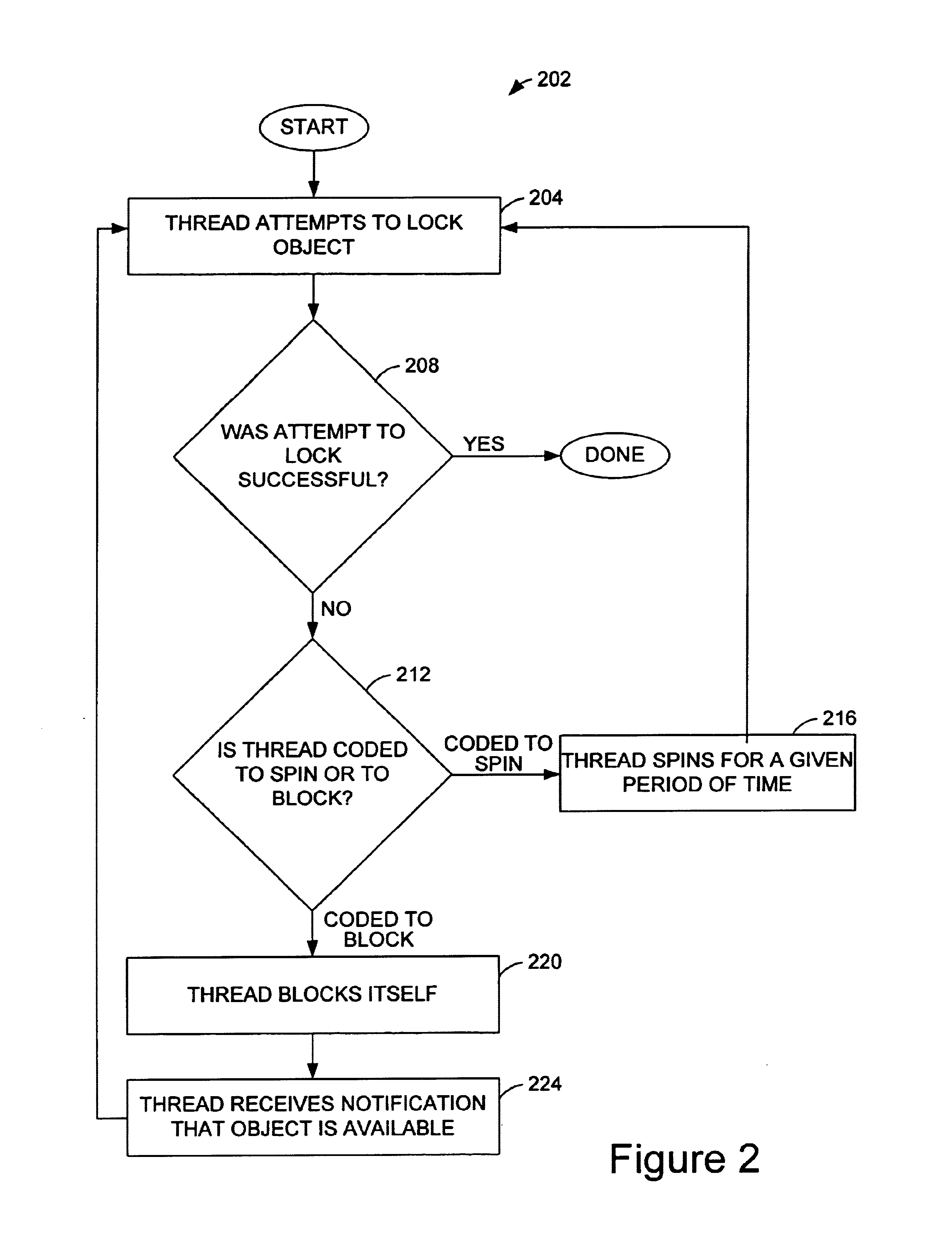Method and apparatus for selecting a locking policy based on a per-object locking history
a technology of locking policy and per-object locking, applied in the direction of multi-programming arrangement, program control, instruments, etc., can solve the problems of inefficient continuous spinning, inefficient thread blockage or spinning, and inefficient thread blockag
- Summary
- Abstract
- Description
- Claims
- Application Information
AI Technical Summary
Problems solved by technology
Method used
Image
Examples
Embodiment Construction
In a computing system such as a multi-threaded, object-based system, objects may often be in contention. In other words, one thread may likely attempt to gain access to an object which is locked by another thread. When an object is owned, e.g., when the lock on a object is held, by one thread, that thread is effectively the only thread which is allowed to operate on the object. In other words, only the owner thread, or the thread which holds the lock to an object, may operate on the object. Accordingly, a different thread which is attempting to acquire the lock on the object is unable to do so until the owner thread relinquishes the lock.
While awaiting the availability of an object it wishes to lock, a thread may either block itself or spin, i.e., busy-wait. The choice of whether to block a thread or to allow the thread to spin is often made on a system-wide basis such that either all threads in a system block, or all threads in the system spin. As will be appreciated by those skill...
PUM
 Login to View More
Login to View More Abstract
Description
Claims
Application Information
 Login to View More
Login to View More - R&D
- Intellectual Property
- Life Sciences
- Materials
- Tech Scout
- Unparalleled Data Quality
- Higher Quality Content
- 60% Fewer Hallucinations
Browse by: Latest US Patents, China's latest patents, Technical Efficacy Thesaurus, Application Domain, Technology Topic, Popular Technical Reports.
© 2025 PatSnap. All rights reserved.Legal|Privacy policy|Modern Slavery Act Transparency Statement|Sitemap|About US| Contact US: help@patsnap.com



